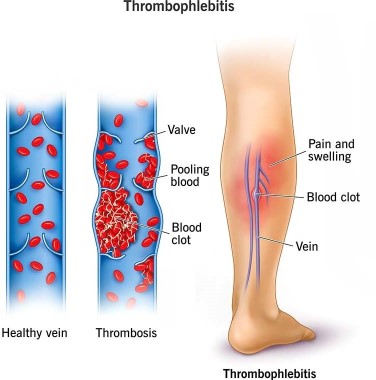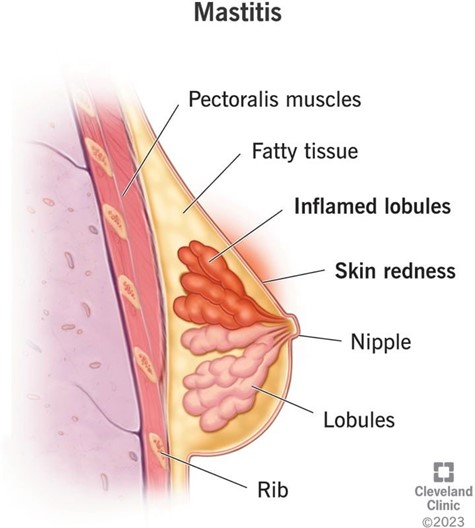A nurse is caring for a client who is 1 day postpartum following a cesarean birth. To prevent thrombophlebitis, the nurse should contribute which of the following interventions to the client's plan of care?
Apply warm, moist soaks to the client's lower legs.
Have the client ambulate frequently in the hallway.
Keep the client on bed rest.
Place pillows under the client's knees while she is resting in bed.
The Correct Answer is B
Choice A reason: Apply warm, moist soaks to the client's lower legs is incorrect, as this action is not effective for preventing thrombophlebitis. Warm, moist soaks can provide comfort and reduce inflammation, but they do not improve blood circulation or prevent clot formation.
Choice B reason: Have the client ambulate frequently in the hallway is correct, as this action can prevent thrombophlebitis by improving venous return and preventing stasis. The nurse should encourage and assist the client to ambulate early and frequently after a cesarean birth, as long as there are no contraindications. The nurse should also monitor the client for signs of orthostatic hypotension and provide support as needed.
Choice C reason: Keep the client on bed rest is incorrect, as this action can increase the risk of thrombophlebitis by reducing blood flow and promoting stasis. Bed rest can also delay wound healing and increase the risk of infection and deconditioning. The nurse should avoid keeping the client on bed rest unless absolutely necessary.
Choice D reason: Place pillows under the client's knees while she is resting in bed is incorrect, as this action can impair blood circulation and increase the risk of thrombophlebitis. Placing pillows under the knees can cause pressure on the popliteal veins and reduce venous return. The nurse should advise the client to avoid crossing their legs or placing pillows under their knees while resting in bed.

Nursing Test Bank
Naxlex Comprehensive Predictor Exams
Related Questions
Correct Answer is B
Explanation
Choice A reason: Perform fundal massage is incorrect, as this action is not indicated for a client who has a firm and midline fundus. Fundal massage is used to stimulate uterine contraction and prevent hemorrhage in clients who have a boggy or deviated fundus.
Choice B reason: Assist the client to ambulate is correct, as this action can promote lochia drainage and prevent pooling of blood in the vagina. The nurse should encourage the client to ambulate early and frequently after birth, as long as there are no contraindications. The nurse should also monitor the client for signs of orthostatic hypotension and provide assistance as needed.
Choice C reason: Check for blood under the client's butock is incorrect, as this action is not necessary for a client who has a small amount of lochia rubra on the perineal pad. Lochia rubra is normal and expected in the first few days after birth, and it indicates that the placental site is healing. The nurse should check for blood under the butock only if there is suspicion of excessive bleeding or concealed hemorrhage.
Choice D reason: Increase the rate of the IV fluids is incorrect, as this action is not indicated for a client who has a small amount of lochia rubra on the perineal pad. Increasing the rate of IV fluids can cause fluid overload and electrolyte imbalance in the client. The nurse should maintain the IV fluids at the prescribed rate and monitor the client's intake and output.

Correct Answer is B
Explanation
Choice A reason: Wear a nipple shield is incorrect, as this recommendation is not indicated for a client who has engorged breasts. A nipple shield is a thin, flexible device that covers the nipple and areola and can help with latch problems, flat or inverted nipples, or sore nipples. However, a nipple shield can also reduce milk transfer, stimulate less milk production, and cause nipple confusion or preference.
Choice B reason: Express milk from both breasts is correct, as this recommendation can help relieve engorgement and maintain milk production. Engorgement is a normal and expected phenomenon that occurs when the milk comes in, usually around 72 to 96 hr after birth. Engorgement can cause breast fullness, tenderness, warmth, and hardness. The nurse should advise the client to express milk from both breasts by breastfeeding frequently and effectively or by using a breast pump or hand expression.
Choice C reason: Obtain a prescription for an antibiotic is incorrect, as this recommendation is not indicated for a client who has engorged breasts. An antibiotic is used to treat mastitis, which is an infection and inflammation of the breast tissue that can cause redness, pain, swelling, warmth, and fever in the affected breast. The nurse should assess the client for signs of mastitis and report any abnormal findings to the provider.
Choice D reason: Apply a heating pad to her breasts is incorrect, as this recommendation can worsen engorgement and cause discomfort. A heating pad can increase blood flow and swelling in the breasts, which can impair milk flow and increase pain. The nurse should advise the client to apply cold compresses or cabbage leaves to her breasts to reduce inflammation and discomfort.

Whether you are a student looking to ace your exams or a practicing nurse seeking to enhance your expertise , our nursing education contents will empower you with the confidence and competence to make a difference in the lives of patients and become a respected leader in the healthcare field.
Visit Naxlex, invest in your future and unlock endless possibilities with our unparalleled nursing education contents today
Report Wrong Answer on the Current Question
Do you disagree with the answer? If yes, what is your expected answer? Explain.
Kindly be descriptive with the issue you are facing.
